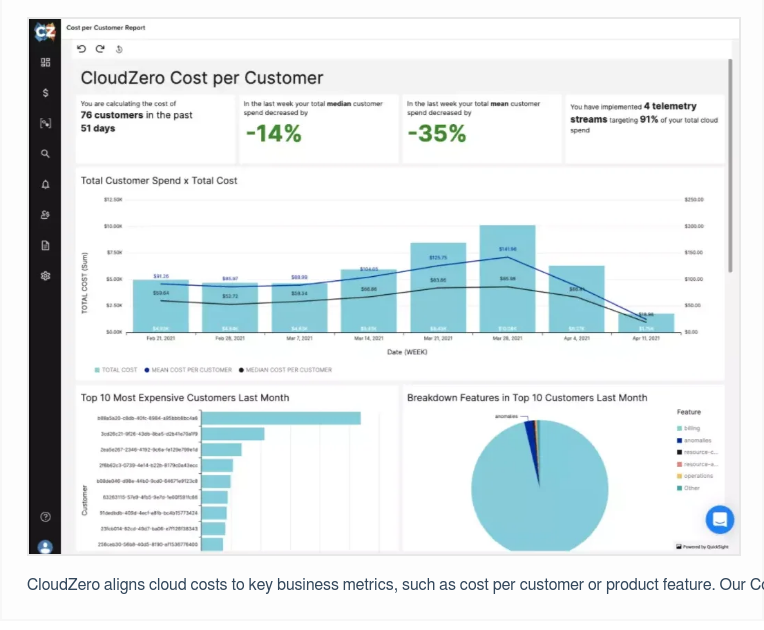Anyone familiar with the cloud understands there are a lot of misconceptions about how it works.
For example, businesses often assume that operating in the cloud will be inherently less expensive than managing an on-premise application. But this is not always the case. In fact, your monthly cloud bill could be the same or more expensive than your on-premise costs. (Check out this blog to understand the total costs associated with each option.)
Cost is just one of the cloud computing myths that can lead your company astray, leading you to operate less efficiently than you would otherwise. In this article, we’ll look at common cloud misconceptions, especially as it pertains to cost optimization.
5 Cloud Computing Myths And Realities
Myth 1: It’s all about choosing and buying the right infrastructure
Talk to a few companies about cloud cost optimization and the overall impression you might get is that it’s all about monitoring costs and making better purchasing decisions, such as buying reserved instances.
It’s true that many early cloud adopters made strategic purchases like AWS reserved instances and took advantage of cloud cost monitoring tools to cut costs and avoid waste. But it isn’t just just about buying and using only what you need.
In addition to buying only what you need and monitoring costs, cost optimization is also about architecting highly efficient applications.
This means building elastic infrastructure that you pay for only when customers use your products. It’s also about taking advantage of cloud-native infrastructure in a way that ensures you’re building cost-optimized software.
Myth 2: It’s all about saving money
As a business, you always want to keep your costs as low as possible. But a lot of times, it may not be in your company’s best interest to save money just for the sake of it.
Whether a million-dollar monthly bill is too expensive or not is completely arbitrary and depends on the company in question. If you look at the bill alone without any context, it would come across as a considerable expense. However, when that bill is put into the perspective of your business, then it becomes clearer whether or not there’s ROI on that spend.
The reality is that cost optimization is not all about saving money. It’s about understanding your cloud costs in the context of your business. Instead of looking at your standalone AWS bill, consider the cost of each product or feature and determine the ROI on those investments.
Tip: SaaS and software companies should consider cost per customer. If costs are going up but there’s a corresponding increase in your customer base, then the business is likely performing well after all.
Myth 3: Cost optimization is the sole responsibility of the engineering or finance team
Some businesses hold either engineering or finance responsible for cost optimization.
While the finance team is often the most interested in cost optimization because they think in terms of spend and ROI, the engineering team has the most power to control cost. Also, cloud bills are often presented in engineering language, such as the number of instances a business has or the total spend on a particular AWS service.
A better way to manage cost optimization: Make cost a shared responsibility, and create a shared language for cost.
Instead of presenting cloud cost as the total spend on an AWS service, for example, link cost to key business metrics, such as the cost of providing a feature or serving a customer segment.
This way, engineering teams better understand the cost of the applications they build while the finance team has meaningful information for budgeting and determining ROI.
Myth 4: A small company shouldn’t care about cost optimization
Many companies believe they shouldn’t worry about high cloud bills at the early stages of building in the cloud because they’ll naturally achieve economies of scale at later stages. But the reality is different.
It’s much harder to unravel and fix cost problems down the road than it is to tackle them from the start of development. It’s also more expensive.
Take security, for example. Many companies recognize that if they aren’t building in security from the get-go, it’s more expensive to build it in at later stages of development. Cost is no different.
Cost must be a central factor as you build and develop software so that as your business grows, your costs can scale in a healthy way.
Myth 5: A tool can solve all your cost problems
Cost optimization requires a combination of technology and human effort. One AI- or ML-powered tool cannot solve your cost problems without human input.
On the flip side, if you rely solely on people to do the job, then the process will be highly manual and tedious.
Without the right tool, cost activities could take up a significant portion of your engineering time. But you also can’t rely on a single tool to do all the work — cost optimization is a product of the right combination of people, processes, and technology.
If you’re investing in a tool, make sure you also have the right expertise to help you set priorities, follow best practices, and ensure your cost data is actionable. If you don’t have a person or team with this expertise, consider hiring a consultant, or choose a tool like CloudZero, which offers both a platform and expert services.
Get Cloud Cost Optimization Right With CloudZero
Blindly adopting common beliefs around cloud computing — like the above myths and misconceptions — can prevent your business from seeing the full benefits of achieving its important objectives.
CloudZero’s cost intelligence platform translates cloud cost into important business metrics that put cost into perspective, making it easier for you to understand the cost of your architecture and build cost-optimized products.  to see how CloudZero can help your business optimize costs.
to see how CloudZero can help your business optimize costs.









